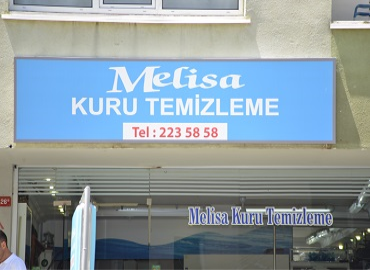
Centrifugal machines used in classical cleaning methods, drying clothes under direct sun and ironing will damage your clothes, shorten the life of your products. Furthermore, it is not possible to provide adequate hygiene by conventional cleaning. Damages that can easily occur on some types of fabric when cleaning at home include:
A) Natural Fabrics:
Silk: Although the color durability is very
high, the fabric texture is very sensitive. It is sensitive to deodorant,
lotion, perfume, alcohol containing substances and sweat. Dry cleaning will
prolong the life of your garment.
B) Artificial Fabrics:
Oily
stains are not completely removed after washing whereas dry cleaning helps to
protect clothes’ as they are brand new, without shrinking, changing color or
texture. Lined clothes and textiles are risky to be hand and machine washed due
to the possibility of deforming their structures. Since ties are made of
delicate fabrics like silk, they also require special care. As well as cleaning
sensitive garments like ties, jackets, blouses, evening dresses etc. Melisa Dry
Cleaning also has laundry equipment especially for home textile and shirt
washing. You may prefer either having only laundry service or you can also take
advantage of our ironing service after you have your products washed in our
company. With Melisa Dry Cleaning's high-level press ironing service, your
clothes will look the best.
Contrary
to what is considered, frequent dry cleaning; prolongs the life of garments by removing
settled dirt that causes debonding. Dirt not only settles in the fabric over
time, but also makes the garment unwearable. The dirt that the fabric is
exposed to has an abrasive effect and causes the fibers to wear out quickly. In
addition, dirty clothing attracts insects and causes even greater wear. Professional
dry cleaning companies make use of special procedures and stain removers for
effective cleaning.
The
stains are divided into two main categories: solvent-soluble stains and
water-soluble stains. Different stains require different processes that stain
removal technicians specialize in. Frequent dry cleaning also removes stains
that can cause oxidation and yellowing if not cleaned. Stains from food, drinks
and other oily substances are getting oxidized, cause yellowing or darkening
when they are exposed to heat and over time. Yellowed or tarnished stains are
much more difficult to remove and often cannot be removed. Therefore, frequent
dry cleaning allows you to use your clothes and textiles for much longer.
One of the advantages of dry cleaning is
the ability of dry cleaning to dissolve fats and oils in a way that water
cannot. Natural fibers such as wool and silk do not shrink, deform and discolor
during the dry cleaning process, as in washing with water. It is also possible
to obtain good results in the cleaning of synthetic fibers such as polyester
thanks to the dry cleaning process.
· Quilt Washing
Just like all other garments, quilts are
received by our delivery personnel after your order. Before the washing
process, softening is applied to the stained areas. Quilts are being prewashed,
washed, rinsed in washing machines. After the washing process is finished, the
quilts are hung in special rooms or drying hangers with drying machine for
drying process. At this stage it is very important to dry the quilts
completely. After it is completely dry, the products passing through the
control stage are sent to packaging service and delivered to your address.
Dry Cleaning and Stain Removal Power
The most effective solution for garment
cleaning is undoubtedly dry cleaning, which also includes pre-stain removal. Delay
in the intervention of stains or following unknown persons’ advice found in
internet and use of lemon, cologne, vinegar, egg yolk, glycerin, thinner,
turpentine by trial and error can make it is impossible to clean the stain. At
this point, Melisa Dry Cleaning employees who specialize with their training
and experience, can identify the fabrics and stains in textile products and can
remove many stains that they intervene by using professional stain removers on
special production stain tables.
Product Care Symbols and Dry Cleaning
Manufacturer or seller companies have to
put their products on the market after performing the necessary tests (washing,
dry cleaning, suitability for ironing process, resistance to abrasion colors of
fabrics, shrinkage test of fabrics, etc.) and specifying the most appropriate
cleaning method in the cleaning instruction. Dry cleaners and consumers should
carry out the necessary cleaning according to the cleaning instructions. If a
problem occurs with the product or its accessories as a result of the operation
despite the cleaning instructions; responsibility is the manufacturer's failure
to perform the required tests as required by law.
Comments(0)
Comment
It will be checked as soon as possible.
Please try again later!